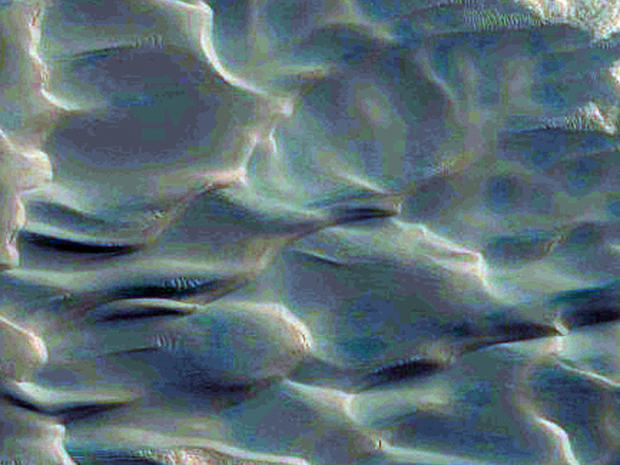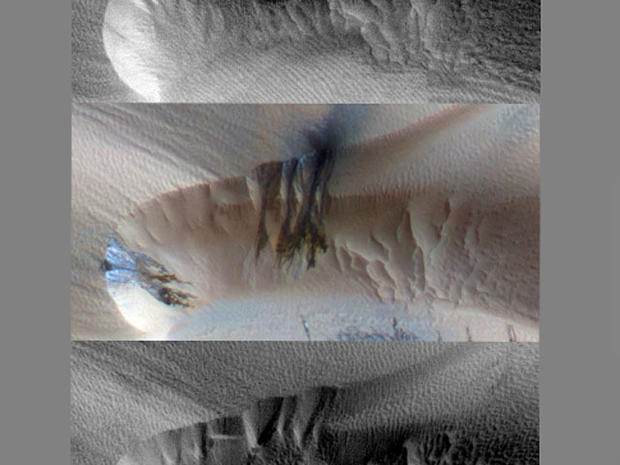Sand Dune Secrets of Mars Revealed
It isn't going to be the prelude to a dune buggy invasion but astronomers reported on Thursday that a Texas-sized area of sand dunes on Northern Mars are not frozen, as was earlier believed, but instead are given to shifting. Another surprise: the area is given to high-speed winds that can move sand quite a distance. The report in the Journal Science undercuts the once-widespread assumption that the interior of these dunes was formed of water ice.
The photographs, taken by NASA's Mars Reconnaissance Orbiter, suggest that this region is among the planet's most active landscapes. The conventional thought among scientists was that strong winds in Mars' early history had produced the area's dunes which were thought to have remained basically intact to the present.
"It's becoming clear that there are very active processes on Mars associated with the seasonal polar caps," said HiRISE Deputy Principal Investigator Candice Hansen of the Planetary Science Institute, who was one of the report's co-authors.
In the images below, the same location was photographed at different times of the day. Every year, dune fields found at high latitudes on the Red Planet wind up covered by a seasonal polar cap of dry ice. The before and after pictures reveal the slow seasonal activity which takes place in Mars' northern region, including sand avalanches and ripple changes.


